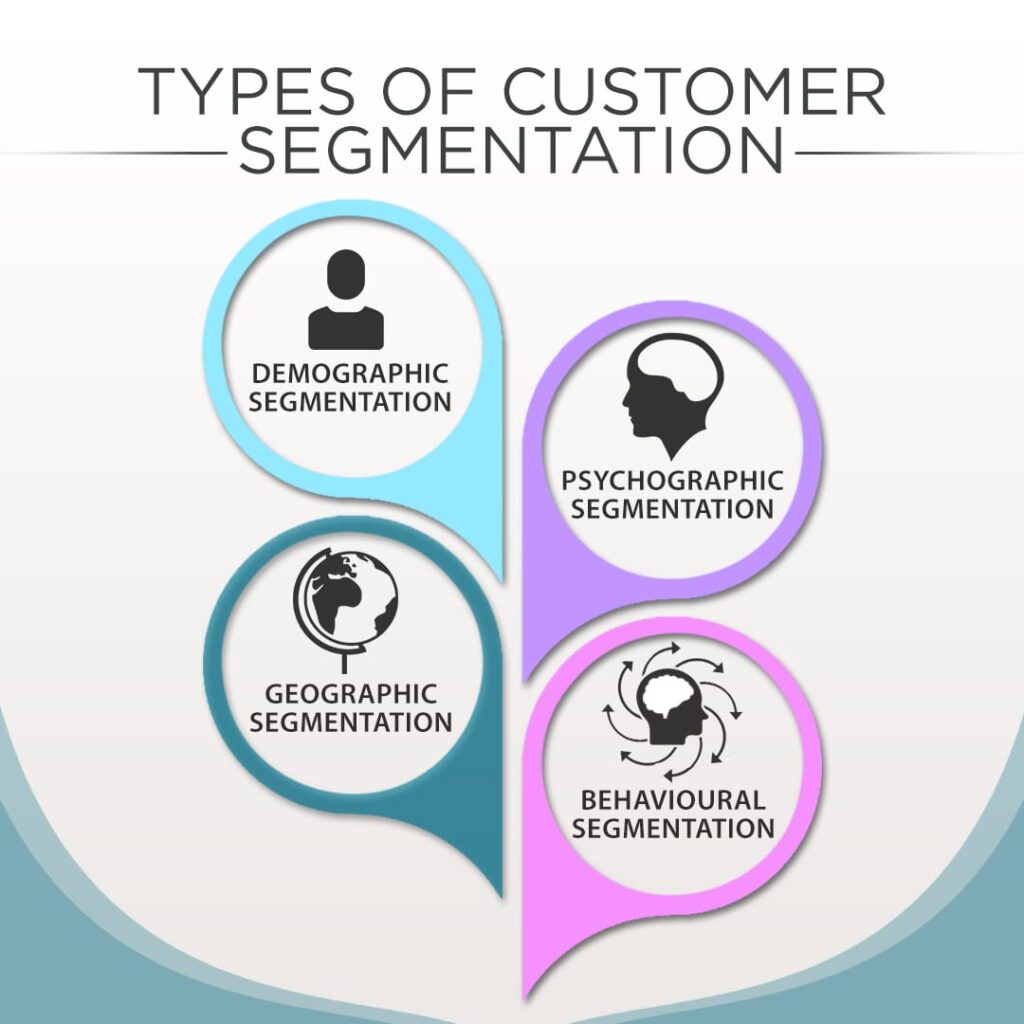How to Price a Product?
Product pricing strategy is both an art and science. While under-pricing the product can result in losses and project the brand as cheap and unreliable, overpricing can risk the product’s affordability for the target audience. Pricing is the most challenging thing to do but determining the right price can make the product a huge success in the market and create a foundation for a business that will prosper. However, the correct product pricing requires data-backed pricing strategies, identification of target consumers, competitive mapping, and understanding of the relationship between quality and price.
Customer Segmentation
Every customer has different needs and purchasing behavior, so a single approach cannot work for all. In this case, customer segmentation becomes a valuable process, where an organization can closely align its strategy and tactics by better targeting its customers. Customer segmentation can be based upon demography, geography, psychography, and behavior.
Demographic Segmentation encompasses age, education, gender, income, religion, level of education, occupation, and family structure. Companies reduce the risk of running campaigns to uninterested customers with proper demographic segmentation, while also allowing marketers to build long-lasting customer relationships, improve their products and services, and optimize marketing strategies. For instance, a makeup brand would target mostly females aged 18-25 who live in an urban environment with personal disposable income to spend more for grooming purposes.
Geographic segmentation is an excellent way to group customers based on their physical locations. Businesses that have the infrastructure to serve customers within certain boundaries use geographic segmentation to their full advantage. For instance, a clothing brand might target beach attire all year-round in California and much of Florida while only promoting them for a few months in other parts of the United States.
Psychographic Segmentation refers to selecting buyers based on their lifestyle choices, interests, and activities. This kind of segmentation also takes into consideration things like what your customers value in life and their pain points. For instance, legacy luxury brand, Gucci aims for its products at upper-class millennials and “rich” consumers with a refined taste and high personal disposable income.
Behavioral Segmentation means the division of customers based on their behavior patterns. This type of segmentation is based upon customer’s attitudes towards a product or service, overall product knowledge, purchasing behavior, and tendencies. For instance, Starbucks utilizes behavioral segmentation to target their morning customers with an incentive so that they come back again to make another purchase later in the day.

Competition Mapping
Some of the biggest brands and retailers reached the top because they understood their competition and capitalized on their mistakes to grow market share. Consumers are incredibly price-sensitive; hence, a strong competitive pricing analysis is an absolute requirement for product success. Analyzing competitive pricing can help identify where your product fits into the retail landscape based on the price point as well as highlight existing pricing strategies. You can also optimize prices by knowing what the competition is doing and compete on the price.
For instance, an Italian food restaurant may consider looking at the prices of other similar kinds of restaurants. If they offer lower prices than competitors, then the restaurant could use that to their advantage while promoting their services. They could also offer special deals such as Buy One, Get One free to set them apart from other restaurants that charge more.
Price Positioning
Most marketers do not know where their price is positioned in the competitive market, and it could lead to serious revenue losses. The price positioning is the act of placing a price within a price range, which indicates where a product stands in the market. Take an example of the biggest OTT platform in the world, Netflix. Netflix’s pricing strategy is market neutral but somewhat close to market penetration. In the USA, cable costs about USD60-USD80, while Netflix’s subscription costs around USD9.99-USD13.99, and broadband internet may cost around USD60-USD70. Besides, offering a Tiered Subscription-based pricing structure facilitating multiple screen viewings and a free trial as a strategy, the OTT platform has managed to expand its subscriber base over the years.
Different Pricing Strategies for Consumer Products
· Value-based Pricing
Organizations that offer unique or highly valuable features or services are better positioned to adopt a value-pricing model rather than a cost-plus pricing model. Value-based pricing strategy is based upon the customer’s perceived value of the product or service whereas cost-plus pricing factors the costs of production into the pricing calculation. Generally, companies selling commoditized items are likely to opt for “cost-plus” pricing. Value-based pricing is the right choice for products that enhances the customer’s self-image with the item’s possession and facilitates unparalleled life experiences. Hence, the perceived value of the product reflects the worth of an item that customers are willing to pay.
Have you ever thought about why Rolex watches are highly expensive when the tangible differences between watches do not justify huge price disparity? It’s all about evoking sentiments that customers associate when they purchase expensive materials. Rolex is included among the most powerful brands in the world. Its premium pricing strategy has introduced whole new price ceilings and accelerated the acceptance of luxury brands. However, luxury pricing has a lot to do with brand imaging and provenance, which adds authenticity to luxurious items. By buying prized possessions, customers want to believe that they belong to a small and elite group for which they are willing to pay for the status that exclusivity brings with it.
Apple has mastered the art of value-based building customer confidence for its technology. The company has the most loyal customer base globally, built up through purchases over the years. Apple’s original strategy was to offer a small number of products, focus on the high end, prioritize profits over market share, and create a halo effect that makes people want Apple products. The unique pricing strategy and brand loyalty allows Apple to have power over pricing.
- Pricing based on Customer Psychology
Psychological pricing takes advantage of the customer’s emotional response to specific price points utilizing odd pricing conventions. The purpose of psychological pricing is to make the price of products or services look cheaper. With marginal price reductions in costs, sellers can improve their sale prospects. Ending the product’s price with the number 9 is one of the oldest pricing methods that genuinely works. For instance, if we compare two price tags, USD100 and USD99, the product with the second price tag will outperform the first one as it breaks the customer’s mental barrier of favoring a two-digit price. A slight difference of dollar determines the sale and a no-sale of the product in question.
Sometimes the primary strategy of marketers is to price products in direct comparison to competitor’s products. While setting a cheap price may drive sales of the product, sometimes the comparative strategy may backfire as customers think a lower price means lower quality. Whereas marketers can set a higher price in comparison to competitor’s products by selling them using words like “value” or convince customers that a higher-priced product is worth it. Top global companies like Amazon, Hershey, Motorola, Apple, and Costco adapt psychological pricing strategies.
Walmart, the biggest retailer in America, uses psychological pricing tactics to get customers to spend more money than they initially intended. Instead of pricing an electronic item for USD200, the retailer may mark the item at USD199 so that people pay more attention to the first number in the price and purchase it.
- Cost-Plus Pricing Strategy
The cost-plus pricing model is a tested strategy for multiple industries, based upon just two things: cost of production and desired profit margin. To determine the selling price of the product, all you need to do is add a markup to the product’s original unit cost. Thus, every sold unit would provide the same revenue to cover costs and increase profit margin. Generally, the cost-plus pricing model works best for industries where defined costs are involved in products or product is utilitarian in nature. With a cost-plus pricing model, the marketer can predict profits and cover production costs. The price is easy to justify to customers and the marketers do not need to use fancy terms to sell the product.
The main aim of cost-plus pricing is to charge as little as possible to attract the largest number of potential customers. The pricing approach can be commonly seen at dollar stores or chain supermarkets. The profit margins are usually lower in this kind of pricing approach as the manufacturer is required to keep lower operating and production costs as much as possible.

- Penetration Pricing
In a market heavily driven by customer trust and brand loyalty, businesses utilize a penetration pricing model to introduce potential customers to a new product and turn them into loyal customers. With penetration pricing, the marketers aim to create brand loyalty and get customers to love their product to the point that they show a willingness to spend more in the future and invest in long-term profit. For instance, if your competitor is selling a product at USD100, you can choose to sell the product at USD97 to offer low prices to the buyer and increase brand awareness.
Gillette adopted a penetration pricing strategy to build its brand value. Offering razors at lower prices than its competitor brands, Gillette has retained its position as a market leader. Gillette compensates its marginal losses by selling additional accessories with the razor, such as blades, attachments, and other accessories priced at a premium rate.
- Price Skimming
A price skimming strategy is when companies charge the highest possible price for a new product and then incrementally lower prices as the product becomes less and less exclusive and popular. The pricing strategy helps to recover sunk costs and maximize the revenue of individual product lines. Price skimming strategy is usually employed for new technologies. For instance, when Samsung Galaxy S8 came out in 2017, it was priced at USD750, but now the same product is available at USD175 on Amazon. Price skimming is also pretty evident at clothing stores, where the older designs become available at low prices when new designs move to the racks.
Conclusion
Pricing is highly customer centric. A pricing strategy that might work brilliantly at one point and time for a segment may fail for a completely different set of consumers at a different point in time. Therefore, the right pricing strategy must follow a balanced approach between four aspects, pricing principle, price positioning, price structure, and price tactics.



